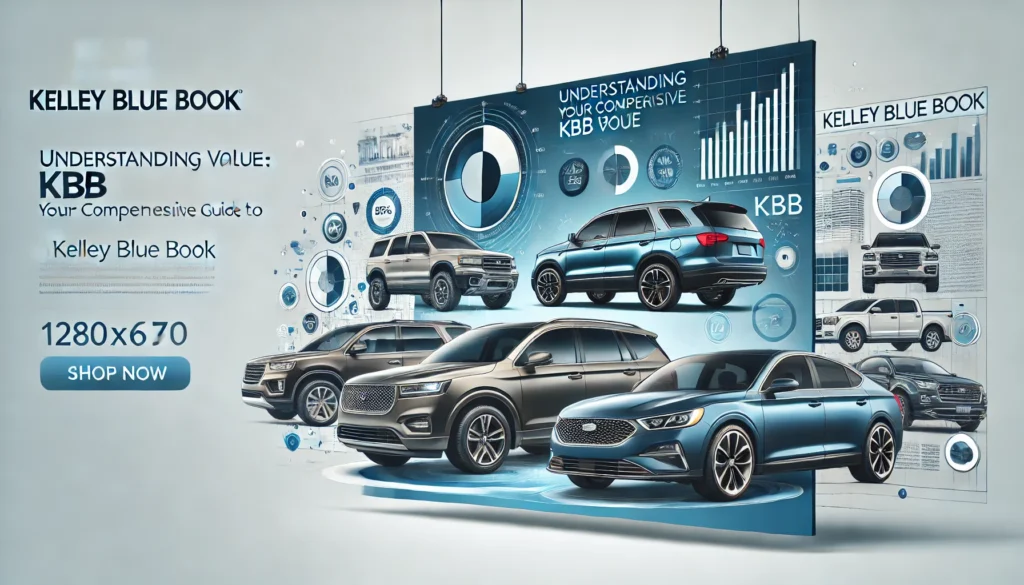Introduction
Kelley Blue Book, or kbb value commonly known, is a beacon in the automotive industry, guiding countless consumers and dealers with reliable vehicle pricing and information. Since its inception, KBB has evolved into an essential tool for anyone looking to buy, sell, or simply understand the Value of a vehicle. This comprehensive guide will delve deep into what KBB value mean, how they are calculated, and how you can use this information to make informed automotive decisions. Whether you’re in the market for a new car, looking to sell your old one, or just curious about your vehicle’s worth, understanding KBB value can significantly enhance your automotive dealings.
What is Kelley Blue Book (KBB)?
Founded in 1926 by Les Kelley, Kelley Blue Book started as a list of automobile values compiled for his dealership’s needs. Today, it serves millions across the United States, offering value and expert automotive reviews, software, and tools tailored for the automotive industry. KBB provides various values—Retail, Trade-In, and Private Party—each serving different market needs. Retail Value represents the price a dealer might sell a used car, including their profit margin. You can expect trade-in value from a dealer when trading in a vehicle, whereas Private Party Value is what you can expect to sell your vehicle for privately.
Understanding KBB Value
Retail Value
Retail Value is crucial for buyers who purchase a vehicle from a dealership. This Value is calculated based on the vehicle’s condition, mileage, and transaction prices in the area. It also includes considerations like the dealer’s cost to prepare the car for sale. Understanding this figure helps buyers know the market rate, ensuring they don’t overpay. Conversely, for dealers, it helps in pricing cars competitively. Factors like seasonal demand, economic climate, and local market trends heavily influence Retail Value. For instance, SUVs may cost more in rural areas compared to urban settings due to higher demand.
Trade-In Value

Trade-in value is essential for individuals who exchange their current vehicle for another. This Value is generally lower than the retail Value because it reflects the dealer’s need to profit from your car’s eventual resale. It’s influenced by the vehicle’s condition, age, mileage, and how easily the dealer believes they can resell it. To maximize your vehicle’s Trade-In Value, keeping it well-maintained and in good condition is beneficial. Simple steps like regular servicing and thorough cleanings before appraisals can significantly increase the trade-in offer.
Private Party Value
Private Party Value is often higher than Trade-In Value because it cuts out the dealer’s profit margin. This Value represents what you can expect if you sell your vehicle directly to another consumer. It varies significantly based on the vehicle’s condition, location, and how well you can negotiate. Selling privately often requires more effort from the seller but can result in a better return on the vehicle. Effective negotiation using KBB’s Private Party Value as a baseline can help buyers and sellers arrive at a fair price.
How to Use KBB Value Effectively
Understanding and utilizing KBB value effectively can make the difference between a good deal and a great one. To access KBB values, visit their website and enter details about your vehicle, such as make, model, year, mileage, and zip code. This gives you a personalized report of your car’s worth across different selling platforms. For instance, case studies have shown that individuals who do their homework and come to the dealership with a printout of their KBB value can negotiate better trade-in offers. However, while KBB provides a solid baseline, it’s important to remember that these values are guides, not absolutes. Market conditions and individual car conditions can lead to deviations from these values.
The Impact of Market Trends on KBB Value
Like any financial asset, vehicle values are subject to market fluctuations. Economic downturns, rising fuel prices, and changes in consumer preferences can all impact KBB value. For example, an increase in electric vehicle popularity may decrease the demand for gasoline cars and hence the KBB value. Staying informed about these trends can help you anticipate changes in KBB value, ensuring you make decisions opportunistically.
Conclusion
Kelley Blue Book values are indispensable tools in the automotive market, providing clarity and confidence to both buyers and sellers. By understanding and utilizing these values effectively, you can ensure that you’re making informed decisions that are good for your wallet and peace of mind.
FAQs
What is the difference between KBB’s Certified Pre-Owned (CPO) and other values?
CPO values reflect vehicles inspected, refurbished, and certified by a manufacturer or other certifying authority. They typically command a higher price due to the assurance of vehicle condition.
How often are KBB values updated?
KBB values are updated weekly to reflect the current market conditions, ensuring accuracy and relevance in the fast-paced automotive market.
Can KBB values be negotiated?
While KBB values provide a guideline, they are not set in stone. Buyers and sellers can negotiate based on vehicle conditions, market conditions, and personal circumstances.
What should I do if my vehicle’s KBB value seems too low?
Consider getting a second opinion from another valuation source or consult a trusted mechanic to ensure your vehicle is evaluated relatively based on its condition and market standards.
How do KBB values compare to other automotive valuation tools?
KBB values are generally consistent with other valuation tools like Edmunds or NADA Guides, but discrepancies can occur based on data collection methods and regional market data used.
You May Also Read: https://ventsbuzz.pro/wealthybyte-contact-email-address/




